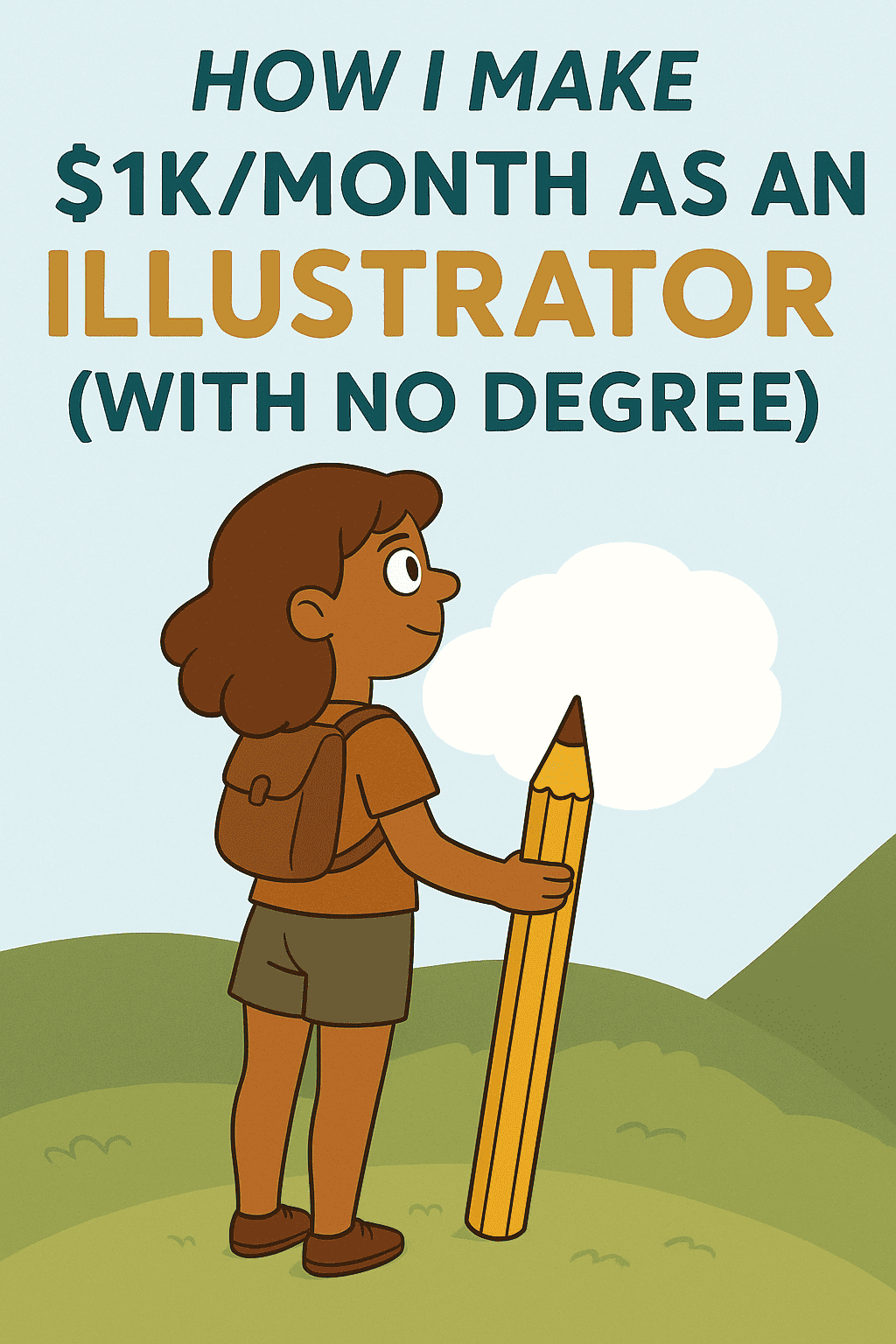Make money as an illustrator
If you’ve been following me for some time, you’ll know that my blog is about blogging and online business.
But I’ve made Stray Curls unique by including my own hand-drawn illustrations in just about every single post.
I’ve been asked this question via email and comments several times, so I thought I’d write a very detailed blog post explaining how to become an illustrator and include some really handy tips that will shorten your process on becoming a pro-Illustrator.

You can read the whole story of how I grew up drawing and turned to illustrating here.
Now, drawing is almost second nature to artists because they do it almost every day.
They doodle while talking on the phone, they admire colors or designs if they pass by something beautiful, and they’re fascinated with watching people’s bodies move when they dance because they just want to draw that anatomy.
These are all signs that you’re meant to be an artist.
However, most children who love to draw get their dreams crushed by people around them who say, “You can’t be an artist. It pays peanuts. It’s not a real job.”

Don’t be disheartened if people tell you there is no future in illustrating.
This advice mostly comes from people who either know nothing about art or have had their own dreams crushed by an elder so they’ve admonished their creativity at a young age and grown up to look for a “serious” job.
Let me go out on a limb here and tell you for a fact that it is possible to become an illustrator who makes a full-time income doing what you love – drawing.
So, if you’re wondering where you begin, what kind of tools can you use to draw and illustrate, and what courses or books you should read, fear not! This post will explain everything.
Ready, Freddy?
Let’s begin.
This post includes affiliate links to products I truly (from the bottom of my heart) recommend, meaning at no extra cost to you, I may earn a small percentage which I will use to pamper my poor pups.

How to Become an Illustrator without a Degree
Before I discuss the resources and tools I’ve used, I want to talk about the activities I did daily to help me become an Illustrator.
1. Draw every single day

It doesn’t matter whether you want to be a traditional illustrator or a digital illustrator.
You need to get the basics right. You have to draw every single day.
Don’t bother about being perfect. Don’t bother about creating a masterpiece every day. To get to where you want to be, you have to practice.
I didn’t have any illustration style when I first started.
My style was extremely simple. It slowly evolved over the years to become what it is now.
Initially, I’d draw an illustration with a pencil, trace over it with a black pen, scan it into my computer, and trace and color it with Photoshop and Illustrator. It looked very amateurish.

But I’ll explain how I improved.
2. Don’t scrimp out on your learning
When it comes to writing, drawing, or blogging, I prefer investing in myself because it’s a shortcut to getting there faster.
It’s like studying a subject.
You can either try to do it yourself or take a course to get the results faster.
I watched multiple classes on illustration so that I could understand how to draw human bodies, and expressions and capture movement with cartoons.
Here are some classes I loved (all pocket-friendly):
- Draw Appealing Characters with Personality
- Procreate for Beginners
- Digital Character Illustration – Conceptualization and Color
- Pencil Portraits and Commissions
You might think that drawing is easy, but it takes a lot of skills to make illustrations look seamless.
Capturing movement and drawing poses took me some time to learn.

This is my improvement in 3 years.
Illustration tools for beginners

A lot of people ask me what tools I use for illustrating daily.
I knew that illustrating was something I was going to do for a long time, so I saved up to buy a Wacom Cintiq while illustrating for clients constantly or doing basic graphic design. Please note that at this time, I was still working with black ink sketches and Photoshop. I had no graphic tablet. Here are the illustrations I was making for clients.
I understand that a Wacom Cintiq is not an affordable option for most Illustrators who are starting out, so I highly recommend getting a Wacom Intuos if you’re strapped for cash.
You can get it for less than $100.
